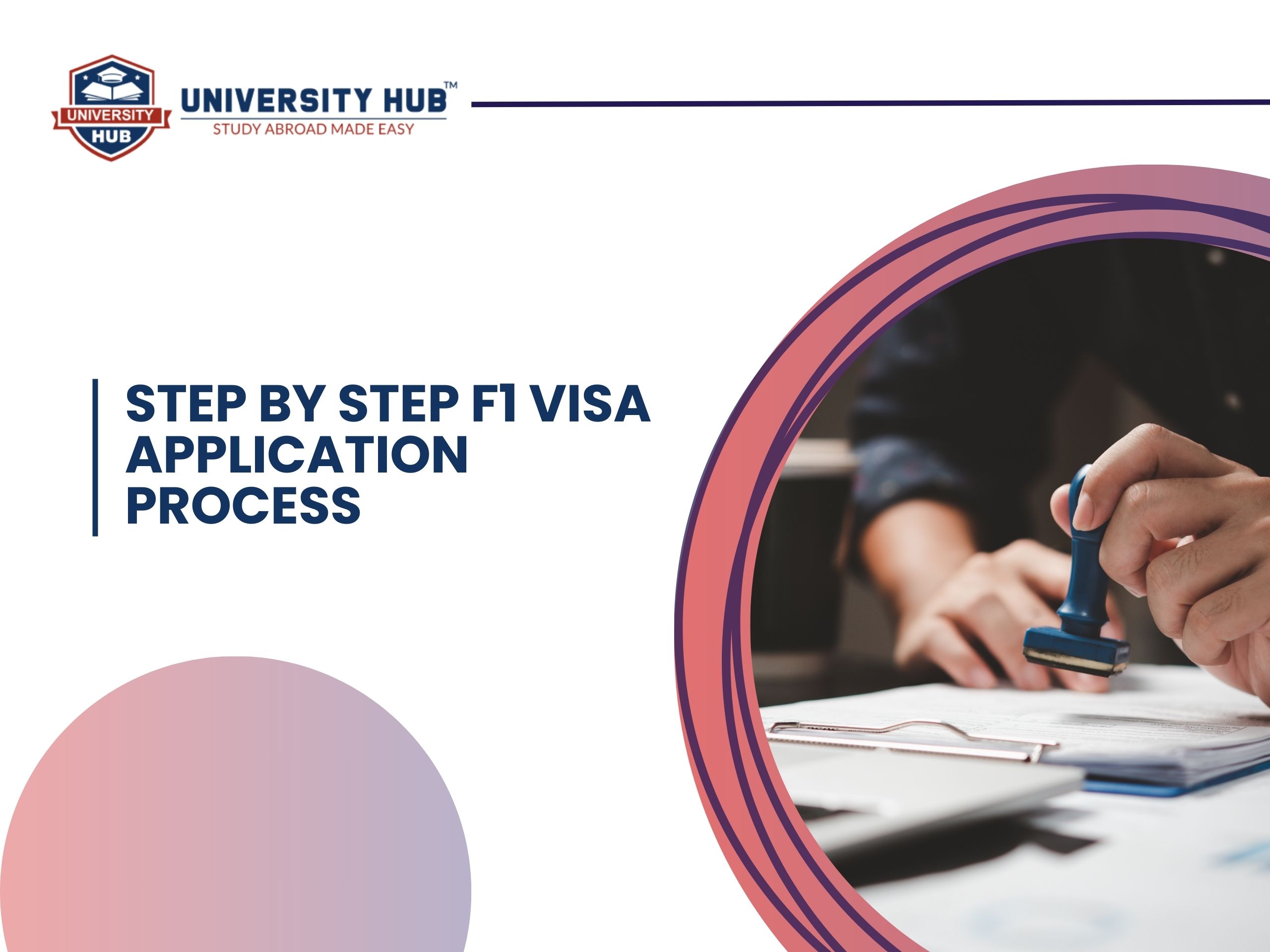International students who wish to study in the United States must have a thorough understanding of the F-1 student visa application process. The F-1 student visa is granted to international students who aspire to enroll in different levels of the education system in the US, from elementary school to university and graduate school. At present, over one million international students seek education in the US. With an F-1 visa, you can also join them. In this article, we’ll discuss everything you need to know about getting an F-1 visa. Here’s the guide to F-1 visas for international students in the US.
What Is an F-1 Visa?
This non-immigrant student visa permits international students to study at US institutions. The F-1 visa is the most popular student visa type sought after by students who wish to study at a college or university in the USA. Your application must be accepted by an accredited US institution to become eligible to apply for an F-1 visa.
F-1 Visa Requirements
When applying for an F-1 visa, you should keep in mind several rules. It is important to meet these requirements to get your application accepted by the institution.
Institutional certification- SEVP Immigration and Customs Enforcement must approve the college or university you plan to study at.
Full-time enrollment- While your academic term is in session, you need to be enrolled as a full-time student.
English language proficiency- You need to achieve the English language proficiency score required by your institution or take courses to enhance your English skills.
Sufficient funding- You need to demonstrate that you have enough funds to cover your studies and living costs in the US.
Valid passport- Make sure your passport remains valid for at least six months after you finish your program.
Home country residency- It is necessary for you to have a place to live in your home country after you graduate.
Also read: University Application Process In The USA
Documents Required
- Valid passport.
- Non-immigrant visa applications require Form DS-160.
- Two photos that meet US visa requirements.
- Proof of F-1 visa fee payment.
- Form I-20. The Form I-20 specifies the funds needed for your education and living in the US. Submit documents showing you have the required funds. To achieve this, you’ll need to submit various documents, including:
- The bank statements and tax records cover the past 3 years.
- Pay records from past jobs.
- Proof of scholarship is required if you have received one.
- Paying tuition for a semester or a year is a good idea, but not required.
- If you have a sponsor in the US, you’ll have to provide Form I-134, Affidavit of Support, along with the sponsor’s bank statements for the past three years.
- If you are funding your US education through a loan, you must also show proof of the approved loan
Required educational and qualification documents.
- Original transcripts
- Scores of standardized tests (TOEFL, IELTS, GRE, GMAT, etc.)
- Acceptance letters from the institution you were accepted to.
- Previous degree diplomas
- Health insurance proof for international students.
Also read: How To Work In The USA With A Student Visa?
F-1 Visa Application Process
Get Accepted and Get Your I-20
Once accepted to a SEVP-certified US university, the F-1 student visa process commences. The US government uses SEVP certification to confirm your university’s accreditation and ability to provide education. Once you’re admitted, your university will supply you with the I-20 form. This form captures your study plans and includes details about your stay.
Pay Your SEVIS Fee
You will need to pay around $510 for your F-1 student visa, which covers the visa cost, SEVIS fees, and processing.
Complete Your DS-160 Visa Application
Your visa application is called DS-160. Completing DS-160 is mandatory for all international students seeking an F-1 visa. Once your DS-160 is submitted successfully, you’ll get a printed confirmation with a barcode. Save this form; you will need it for your visa interview.
Schedule Your Visa Interview
Locate the closest US embassy or education consulate and arrange an appointment for your visa interview. The wait times for appointments will differ depending on the country, and they can last for several months. Therefore, make sure to schedule your appointments as early as you can.
When enrolling at a US university through University Hub, make sure to consult your enrollment advisor for advice on student visa interviews or arranging a practice interview session. Preparing for your visa interview beforehand will increase your comfort level during the process.
Attend Your Visa Interview
The purpose of the interview for the F-1 visa is to confirm your intention to study as a legitimate student. During your visa interview, you must demonstrate financial ability to support your studies in the US and express intentions to return home after completing your program. You must attend your visa interview in person, with a few rare exceptions such as being under 14 or over 80 years old or meeting specific visa renewal criteria.
Once your visa interview is successfully completed, you will be granted an F-1 visa and obtain F-1 status. You have received clearance to continue your education in the United States.
Also read: How To Prepare For USA F1 Visa Interview?
F-1 Visa Validity
Depending on your visa approval, it could be for the entire duration of your studies in the US or a shorter period. If your study program lasts for 1 year, the Embassy will probably issue a 1-year visa. If your degree program is for 2 years but you only receive a 1-year visa, you should later apply for a renewal. The best choice is to renew the F-1 visa.
The duration of your F-1 visa is determined by the dates specified on your I-20 and I-94 forms, which are issued upon your entry into the US. Following the same procedure is required when renewing your visa. You could potentially skip the interview since you’ve already completed it once and plan to focus on your education to obtain your degree. With an approved visa, you can depart for the US 30 days prior to your program’s commencement. Earlier entry into the US is not allowed.
Now that you know the step-by-step F-1 visa application process, you can start preparing to study in the US. However, if you are confused about the procedures and need professional help, University Hub is here to assist you. We can help you with your application process, allowing you to enjoy a hassle-free study abroad journey. Contact us at +1 502-930-2702 today! And start preparing for the visa interview.
Here are People Also Ask (PAA) :
1. What are the steps to apply for an F1 visa?
The F1 visa application involves several key steps:
- Acceptance by a SEVP-Approved Institution: Secure admission to a Student and Exchange Visitor Program (SEVP)-approved U.S. school.
- Payment of the SEVIS Fee: Pay the Student and Exchange Visitor Information System (SEVIS) I-901 fee to receive a Form I-20.
- Completion of the DS-160 Form: Fill out the Online Nonimmigrant Visa Application (Form DS-160).
- Payment of Visa Application Fee: Pay the non-refundable visa application fee, which varies by country.
- Scheduling and Attending the Visa Interview: Arrange an appointment at the U.S. embassy or consulate and prepare for the interview.
For a detailed guide, visit University Hub.
2. What documents are required for the F1 visa application?
Essential documents include:
- Valid Passport: Must be valid for at least six months beyond your intended stay.
- Form I-20: Issued by your U.S. educational institution upon acceptance.
- Form DS-160 Confirmation Page: Proof of completing the online visa application.
- SEVIS Fee Receipt: Proof of payment for the SEVIS I-901 fee.
- Visa Application Fee Receipt: Evidence of payment for the visa application fee.
- Passport-Sized Photograph: As per U.S. visa photo requirements.
- Academic Records: Transcripts, diplomas, degrees, or certificates from previous institutions.
- Proof of Financial Support: Bank statements or affidavits demonstrating sufficient funds.
Detailed information is available at the University Hub.
3. How long does the F1 visa application process take?
Processing times can vary, but generally:
- Form I-20 Issuance: After acceptance, it may take a few weeks for the institution to send your Form I-20.
- Visa Interview Wait Time: Depends on the U.S. embassy or consulate’s schedule; check the U.S. Visa Appointment Wait Times for specifics.
- Visa Processing Time: Post-interview, typically takes several days to a few weeks.
It’s advisable to begin the application process well in advance of your program’s start date.
4. What is the SEVIS fee, and how do I pay it?
The SEVIS (Student and Exchange Visitor Information System) fee funds the system that tracks students and exchange visitors in the U.S. As of 2024, the SEVIS I-901 fee for F1 visa applicants is $350. You can pay this fee online through the FMJfee website using a credit or debit card. Ensure you print and retain the payment confirmation for your records and visa interview.
5. Can I work while on an F1 visa in the USA?
Yes, F1 visa holders have employment opportunities, subject to certain conditions:
- On-Campus Employment: Permitted up to 20 hours per week during academic sessions and full-time during scheduled breaks.
- Curricular Practical Training (CPT): Allows employment integral to your curriculum, such as internships.
- Optional Practical Training (OPT): Provides up to 12 months of employment authorization in your field of study after completing your degree.
It’s essential to consult with your Designated School Official (DSO) before engaging in any employment to ensure compliance with visa regulations.
For comprehensive guidance on the F1 visa application process, visit the University Hub.




